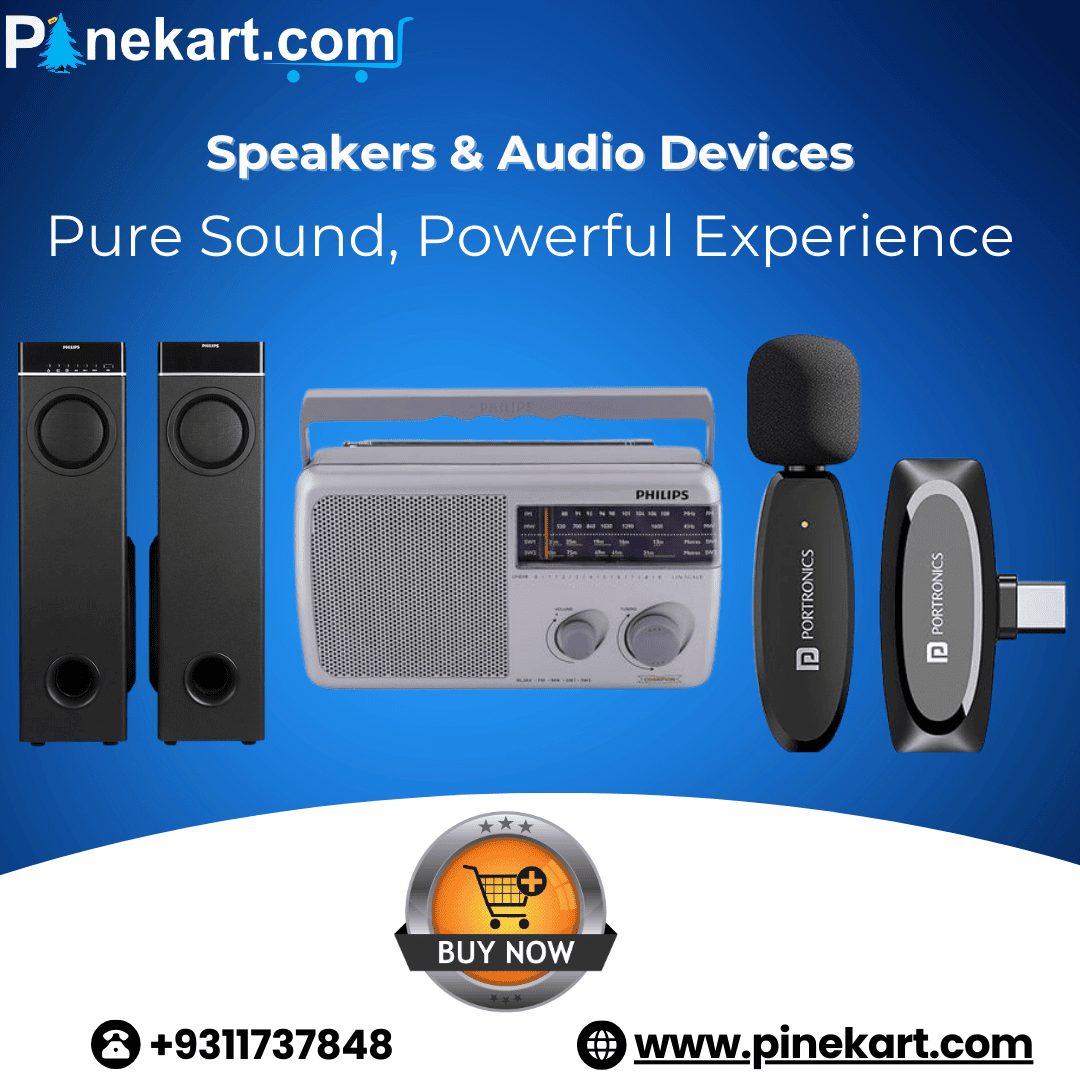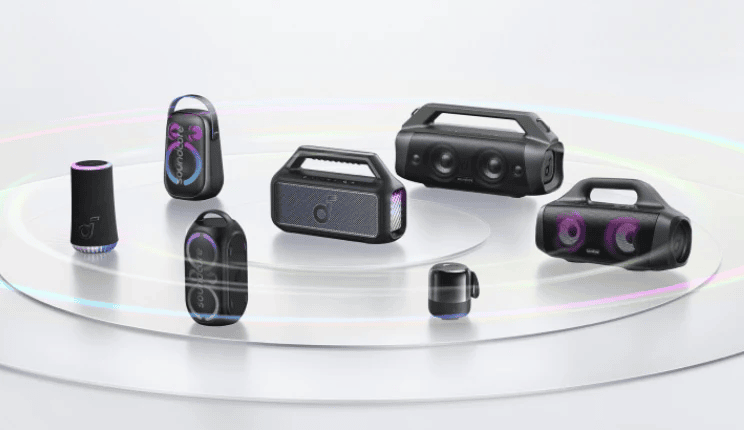In a world increasingly driven by media consumption, from music streaming to podcast listening and binge-watching content, having the right audio device can transform the entire experience. Whether you're a music lover, gamer, content creator, or just someone who enjoys rich, immersive sound, investing in quality speakers and audio devices is no longer a luxury—it's a necessity.
Why Audio Quality Matters
Why Audio Quality Matters
It shapes emotions, creates ambiance, and elevates storytelling. Poor audio can completely ruin a movie or song, no matter how visually stunning or well-written it is. Conversely, great sound can make average content feel compelling and immersive.
Audio devices are not just tools; they're gateways to a richer sensory experience. From the subtle rustle of leaves in a surround-sound movie to the booming bassline of your favorite EDM track, high-quality audio devices capture it all.
Types of Audio Devices
Types of Audio Devices
1. Bluetooth Speakers
Bluetooth speakers have gained immense popularity due to their portability and ease of use. You can pair them with your smartphone, tablet or laptop within seconds and enjoy music wherever you go. Brands like JBL, Bose, Sony, and Ultimate Ears offer a wide range of options, from pocket-sized speakers to party powerhouses with deep bass and long battery life.
Pros:
Wireless and portable
Rechargeable batteries
Easy to connect with multiple devices
Ideal for: Travel, small gatherings, casual listening
2. Smart Speakers
2. Smart Speakers
Smart speakers audio quality with voice-assistant capabilities. These devices are not only good for playing music but also for managing smart home systems, setting reminders, and getting real-time information.
Pros:
Integrated voice assistants (Alexa, Google Assistant, Siri)
Smart home integration
Multi-room audio support
Ideal for: Smart homes, tech-savvy users, everyday convenience
3. Home Theater Systems
3. Home Theater Systems
For cinema enthusiasts, a home theater system is the holy grail of audio devices. These setups include multiple speakers (front, rear, center, subwoofer) strategically placed to create a surround sound effect.
Pros:
Cinematic sound quality
Immersive surround experience
High volume and bass control
Ideal for: Movie buffs, gamers, large living rooms
4. Soundbars
If you want better audio without the complexity of a full home theater system, soundbars are a perfect solution. Slim, sleek, and easy to install, they enhance your TV’s audio significantly. Many models now come with wireless subwoofers and support for Dolby Atmos.
Pros:
Space-saving design
Enhanced TV sound
Easy setup
Ideal for: Apartments, minimalist setups, TV enhancements
5. Studio Monitors
For professionals like music producers, podcasters, and video editors, studio monitors are essential.
Pros:
Accurate sound reproduction
Durable and long-lasting
Ideal for mixing and mastering
Ideal for: Studios, content creators, audio professionals
6. Headphones and Earbuds
Though not speakers in the traditional sense, headphones and earbuds are arguably the most used audio devices today. From noise-canceling over-ear models to compact true wireless earbuds, there's something for everyone.
Pros:
Personal and portable
Wide range of prices and features
Noise isolation/cancellation options
Features to Look For
When shopping for speakers or audio devices, consider the following key features:
Sound Quality: Look for balanced sound with clarity in highs, mids, and lows. Bass shouldn't overpower the rest of the spectrum.
Connectivity: Bluetooth, Wi-Fi, AUX, HDMI ARC, optical input—ensure the device connects well with your existing tech.
Battery Life (for portable devices): A long-lasting battery (10+ hours) is ideal for uninterrupted listening.
Build Quality: Durable materials and water resistance (especially for outdoor speakers) add to the device’s longevity.
Smart Features: Voice control, app compatibility, and multi-device pairing can enhance usability.
Emerging Trends in Audio Devices
Emerging Trends in Audio Devices
The audio industry is constantly evolving, with some exciting trends taking shape:
Spatial Audio: Simulates 3D sound, making you feel like you're in the middle of the action—great for movies and games.
Hi-Res Audio Support: Audiophile-grade sound reproduction for streaming services like TIDAL, Apple Music, and Amazon Music HD.
Voice-Activated Controls: Growing integration of AI assistants like Alexa and Google Assistant into more audio devices.
Sustainable Materials: Eco-friendly speakers made with recycled plastic, bamboo, and other sustainable resources.
Frequently Asked Questions (FAQs)
Q1. Are more watts better in a speaker?
Not always. Higher wattage can mean louder sound, but clarity, audio quality, and speaker design matter more. Look at RMS power (not peak) for a realistic measure.
Q2. Can I use Bluetooth speakers for my smart TV?
Yes, if your TV supports Bluetooth output. Otherwise, consider using an AUX cable or a Bluetooth transmitter.
Q3. What is latency, and why does it matter?
Latency is the delay between audio playback and what you hear. Low latency is important for watching videos or gaming. Look for aptX Low Latency support in wireless headphones.
Q4. Which is better for music: headphones or speakers?
Headphones offer more detail and isolation, making them ideal for personal use. Speakers create a shared listening experience and better bass impact.
Final Thoughts
Speakers and audio devices are more than just entertainment tools—they’re vital to how we experience the world around us. Whether you’re jamming out to your favorite playlist, hosting a movie night, or producing a podcast, the right device can make all the difference. With so many options on the market, there's a perfect audio solution for every need, space, and budget.


